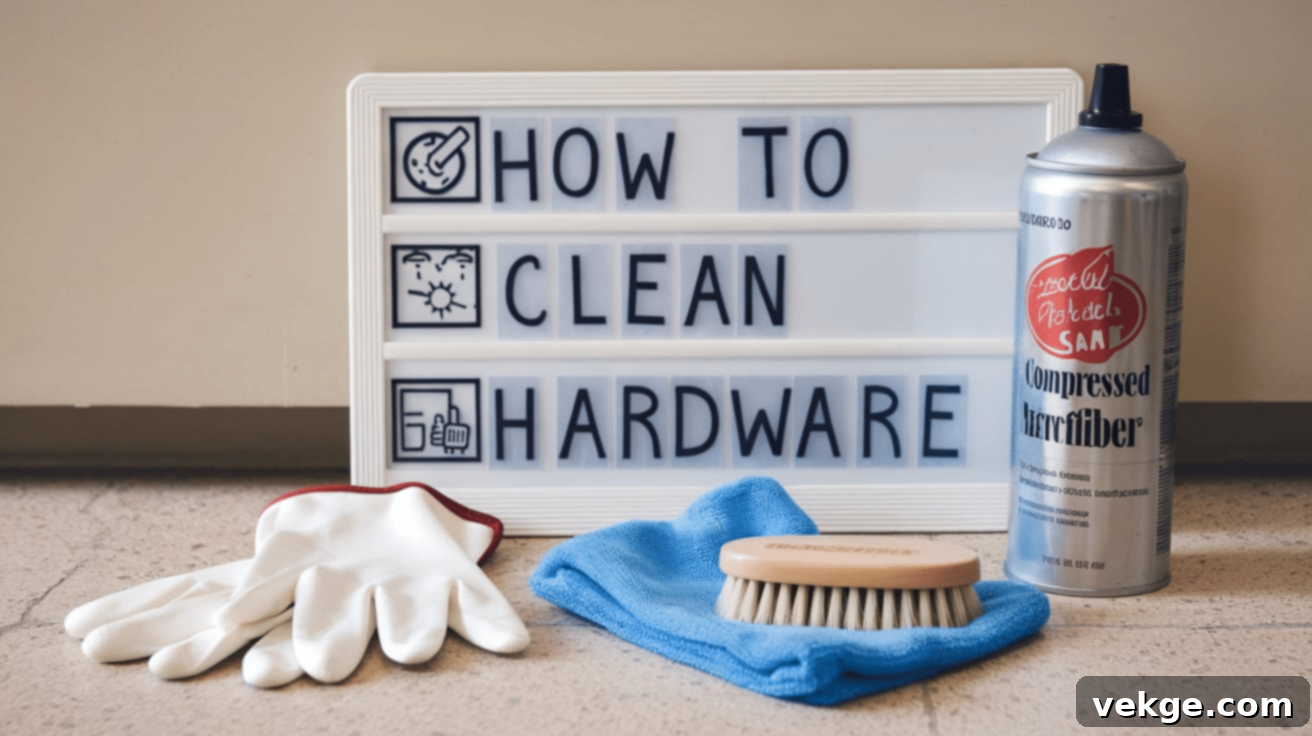Unlock the Shine: Your Ultimate Guide to Cleaning and Maintaining Home Hardware
The small details in your home often make the biggest impact. Hardware—like the knobs on your cabinets, the handles on your doors, and the hinges that allow them to open smoothly—plays a crucial role in both the aesthetics and functionality of your living space. Yet, these frequently touched elements are often overlooked in our cleaning routines.
Over time, daily use combined with exposure to dust, grease, hand oils, and environmental factors can leave your hardware looking dull, dirty, or even tarnished. This grime not only detracts from your home’s appearance but can also impact the hardware’s performance and longevity. The good news? Restoring its original luster is surprisingly simple and doesn’t require specialized tools or harsh chemicals.
With just a few basic supplies and a clear, easy-to-follow approach, you can transform your tired-looking fixtures into sparkling accents. This comprehensive guide will walk you through the essential steps for cleaning various types of hardware, offering tailored advice for different materials and ensuring your home looks polished and well-maintained without much effort.
Why Regular Hardware Cleaning Matters
Before diving into the “how-to,” it’s essential to understand the significant benefits of incorporating hardware cleaning into your routine. It’s more than just aesthetics; it’s about preservation, functionality, and even health.
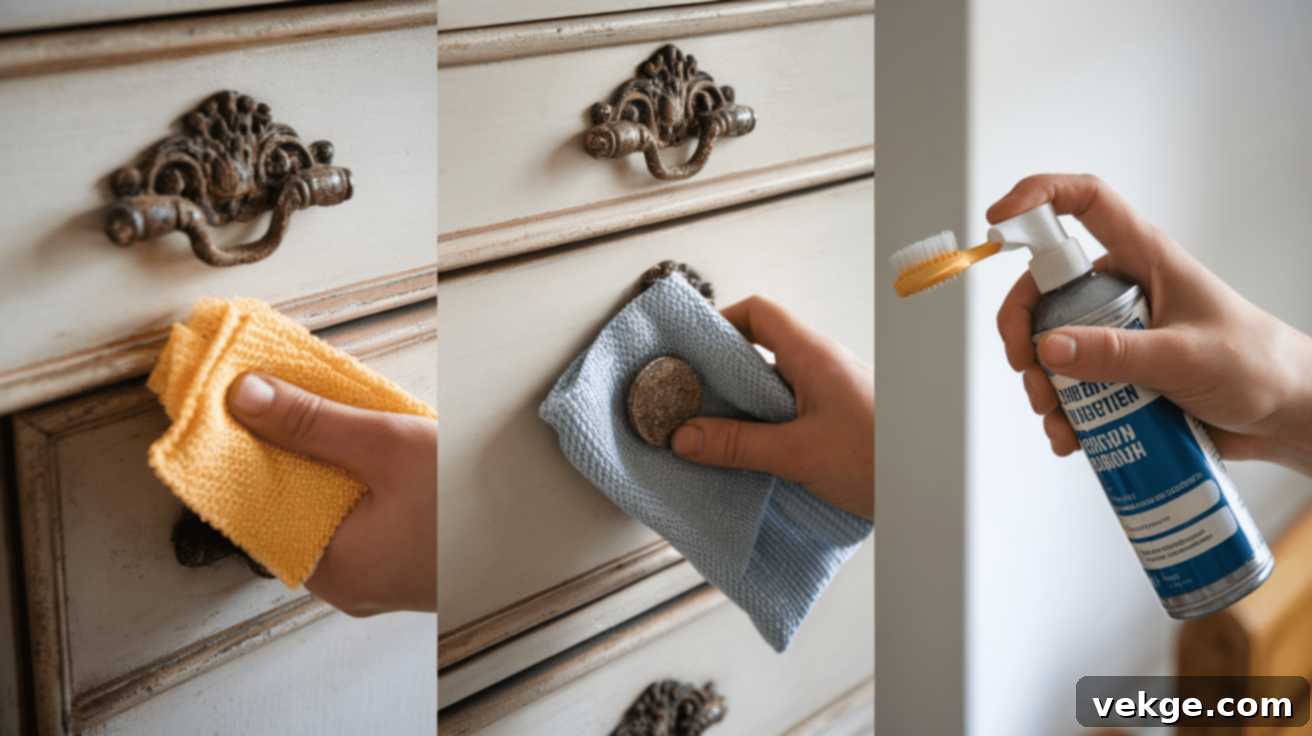
- Preservation: Regular cleaning helps prevent the accumulation of dirt, grime, and corrosive substances that can slowly erode or damage the material over time. By removing these elements, you extend the lifespan of your hardware, saving you from costly replacements.
- Aesthetic Appeal: Dingy or tarnished hardware can make even the most beautifully designed furniture or cabinetry appear neglected and worn. Keeping your hardware sparkling ensures your entire space looks fresh, polished, and meticulously cared for, enhancing your home’s overall charm and perceived value.
- Functionality: Grime and buildup can impede the smooth operation of moving parts like hinges, door handles, and faucet mechanisms. A clean piece of hardware works more efficiently, preventing stiffness, sticking, or unnecessary wear and tear that can lead to breakdowns.
- Health and Hygiene: Hardware is a high-touch surface in any home. Dust, dirt, and oils can harbor allergens, germs, and bacteria. Regular cleaning sanitizes these contact points, significantly improving the overall cleanliness and hygiene of your living environment.
Essential Tools and Supplies for Hardware Cleaning
Gathering your supplies before you begin will make the cleaning process much smoother and more efficient. Most of these items are likely already in your home, making hardware cleaning an accessible DIY task.
- Mild Dish Soap or All-Purpose Cleaner: Gentle yet effective for breaking down general dirt, grease, and hand oils.
- Baking Soda (optional): A natural, non-abrasive powerhouse for tackling stubborn stains and gentle scrubbing.
- White Vinegar (optional): Excellent for dissolving mineral deposits, breaking down grime, and removing tarnish from many metals due to its mild acidity.
- Microfiber Cloths or Soft Rags: Ideal for wiping, drying, and buffing without leaving lint or scratching delicate surfaces. Have a few on hand.
- A Soft-Bristled Toothbrush or Small Brush: Perfect for reaching into intricate designs, crevices, and tight corners where dirt tends to accumulate.
- Small Container or Bowl: Essential for soaking smaller hardware pieces.
- Rubber Gloves (optional but recommended): Protects your hands from cleaning solutions and keeps them clean.
- Polishing Cloth (for brass, silver, or other metals): Used to bring out a high shine after cleaning, often made from specialized materials.
- Screwdriver Set: If you plan to remove hardware for a more thorough cleaning.
Step-by-Step Guide to Sparkling Clean Hardware
Follow these simple steps to thoroughly clean your home’s hardware, ensuring a pristine finish and extended life.
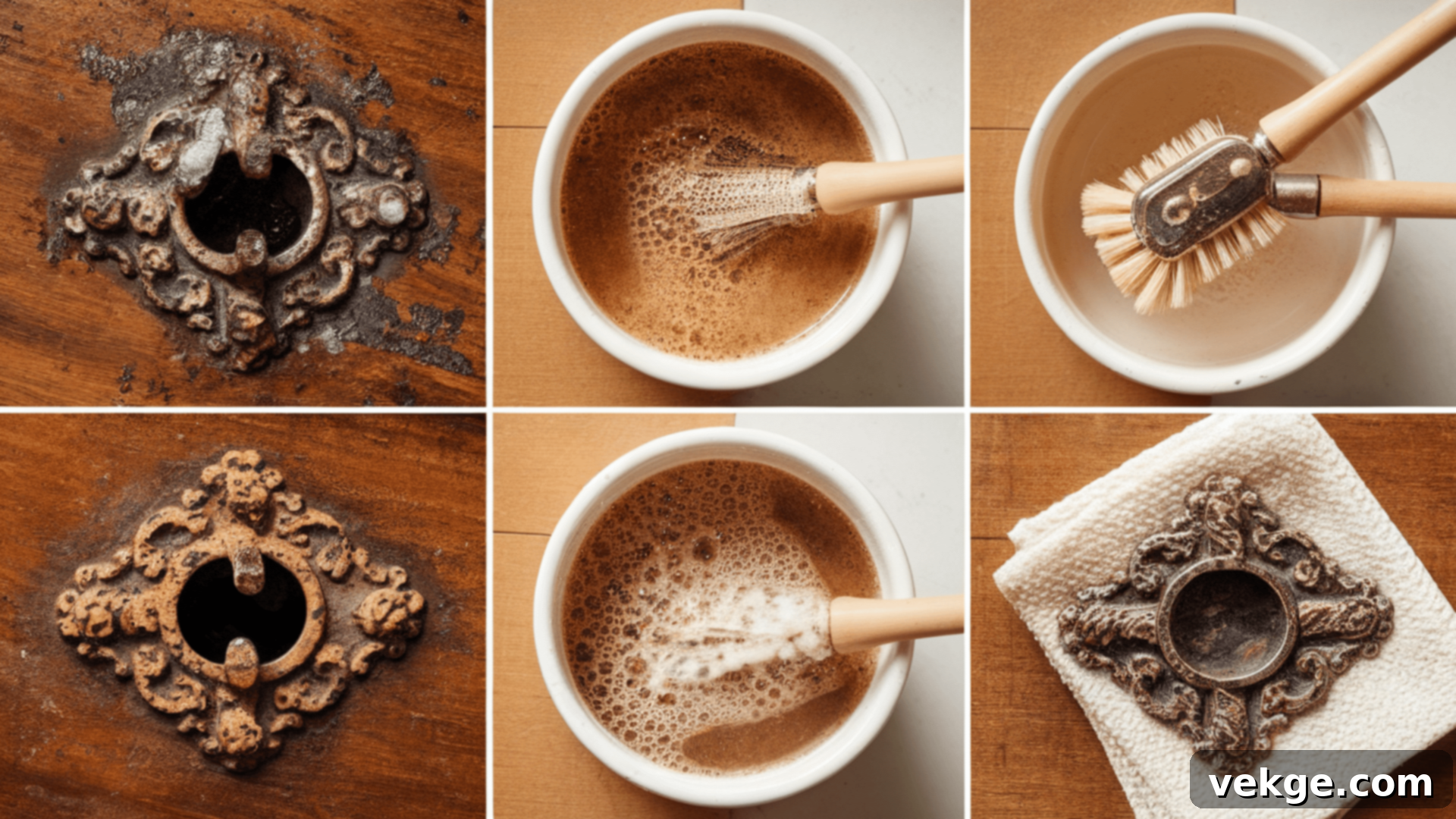
1. Remove the Hardware (If Possible)
For the most effective cleaning, it’s highly recommended to remove the hardware from its fixture. This applies to cabinet knobs, drawer pulls, door handles, or even certain faucet handles. Using the appropriate screwdriver, gently unscrew any bolts or screws. Removing the hardware allows you to access all surfaces, including hidden spots and crevices, for a truly thorough clean. If removal isn’t feasible or the hardware is an integrated part of a fixture (like an older faucet assembly), you can still clean it in place. In such cases, use painter’s tape to protect surrounding surfaces from cleaning solutions.
2. Soak the Hardware
Once removed, place your hardware pieces into a small bowl filled with warm water mixed with a few drops of mild dish soap or an all-purpose cleaner. Allow them to soak for 10–15 minutes. This soaking period is crucial as it helps to loosen and emulsify dirt, grime, and accumulated oils, making them easier to remove. For hardware with stubborn stains or noticeable tarnishing (especially on metals like brass or copper), consider adding a tablespoon of white vinegar to the solution. The mild acid in vinegar actively works to break down oxidation and mineral deposits, preparing the surface for scrubbing.
3. Scrub the Hardware Gently
After the soaking process, it’s time to scrub. Use a soft-bristled toothbrush or a small, non-abrasive brush to gently clean each piece of hardware. Pay close attention to any intricate designs, corners, and areas where dirt or tarnish tends to accumulate. The soft bristles can reach into tight spots without scratching the surface. Always avoid using steel wool, abrasive pads, or harsh scrubbers, as these can permanently damage the finish. Gently scrub in small circular motions to effectively lift away loosened grime and bring out the underlying shine, especially on metal hardware.
4. Address Stubborn Stains and Tarnish
For hardware with particularly stubborn stains, such as dried soap scum on bathroom fixtures or greasy residue on kitchen cabinet pulls, a paste made from baking soda and a small amount of water can work wonders. Apply this paste directly to the stained areas, let it sit for a few minutes to work its magic, and then gently scrub with your soft brush. Baking soda is a natural, finely abrasive cleaner that effectively lifts tough stains without harming most surfaces.
For specific metal hardware like unlacquered brass, copper, or silver that exhibits heavy tarnish, you might need a specialized metal cleaner. Always choose a product specifically designed for your hardware’s material. Apply the cleaner according to the manufacturer’s instructions, usually with a soft microfiber cloth, buffing gently to restore the metal’s natural luster. Test any specialized cleaner on an inconspicuous area first.
5. Rinse and Dry Thoroughly
Once you’ve finished scrubbing and removing stains, rinse the hardware thoroughly under warm, running water to remove all traces of soap, cleaning solutions, or paste residue. If you cleaned the hardware in place, use a clean, damp microfiber cloth to carefully wipe down the surfaces until all residue is gone. The next step is critical: dry the hardware immediately and completely with a soft, clean, and dry microfiber cloth. Any moisture left behind can lead to unsightly water spots, streaks, or even encourage new tarnishing and corrosion, especially on metal items.
6. Polish (Optional, But Recommended for Metals)
For hardware made of brass, copper, silver, or other metals prone to tarnishing, applying a metal polish is an excellent optional step. Polishing not only enhances their aesthetic appeal by bringing back a brilliant shine but also provides a protective barrier against future oxidation and tarnishing. Apply a small amount of an appropriate metal polish to a clean microfiber cloth and gently buff the hardware in circular motions. Ensure the polish is suitable for your specific metal type to avoid any adverse reactions. This protective layer will help keep your hardware looking newer for longer and reduce the frequency of deep cleaning.
Tailored Cleaning for Different Types of Hardware Materials
Not all hardware is created equal, and different materials require specific care. Understanding these nuances will help you clean effectively without causing damage.
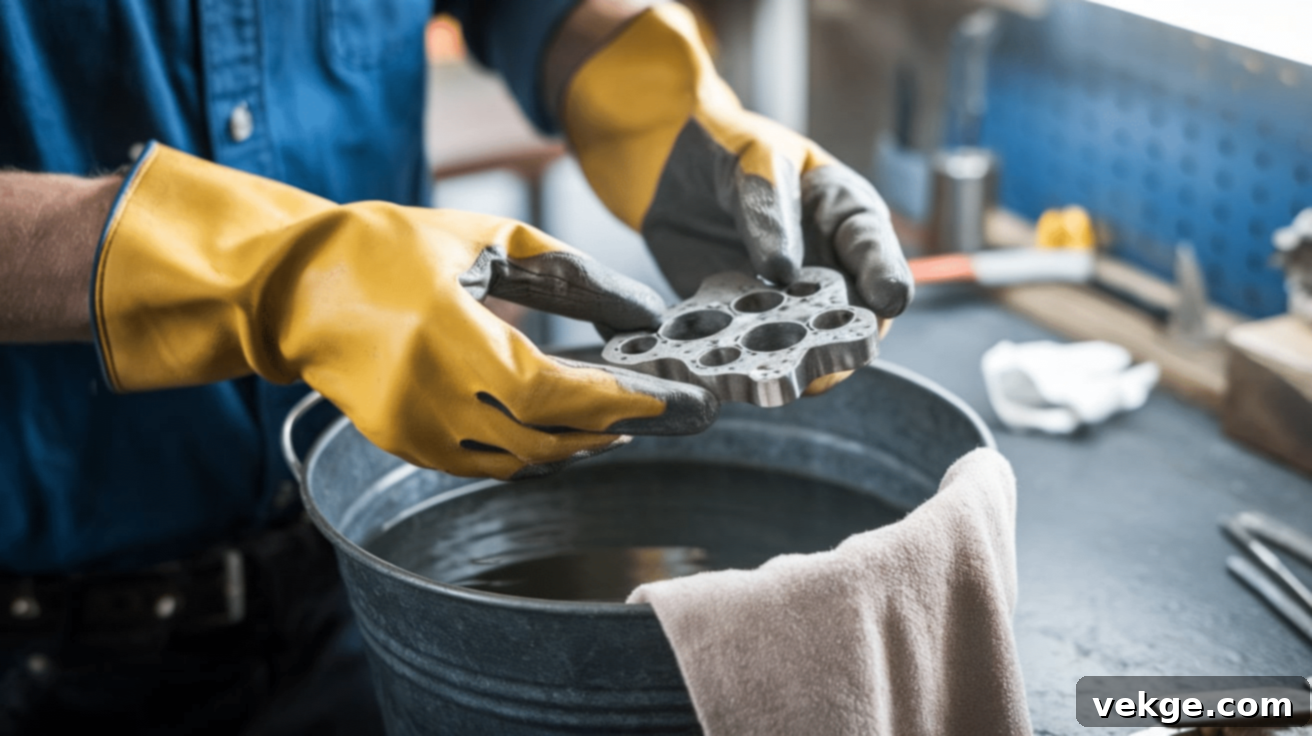
1. Metal Hardware (Brass, Copper, Stainless Steel, Chrome, Nickel)
Metal hardware is durable but can react differently to cleaning agents and environmental factors. Always test cleaners on an inconspicuous area first.
- Brass: Brass hardware is known for its elegant look but is highly susceptible to tarnishing, especially unlacquered brass exposed to air and moisture. For light tarnish, a mixture of white vinegar and water often works. For more severe tarnish, use a specialized brass cleaner. If your brass is lacquered (has a clear protective coating), clean it only with mild soap and water, as harsh cleaners can strip the lacquer.
- Copper: Copper can develop a unique greenish-blue patina called verdigris over time. To clean and restore copper’s warm glow, soak it in a solution of equal parts white vinegar and water with a pinch of salt for about 10 minutes. Then, gently scrub with a soft brush to remove the tarnish. Rinse thoroughly and dry immediately. Specialized copper cleaners are also highly effective for tougher jobs.
- Stainless Steel: Highly resistant to rust and corrosion, stainless steel primarily collects fingerprints, smudges, and water spots. Clean with a mild dish soap solution or a dedicated stainless steel cleaner, wiping in the direction of the grain to avoid streaks. After cleaning, buff with a dry microfiber cloth for a brilliant, streak-free finish.
- Chrome and Nickel: These finishes are generally durable and easy to clean. Use a damp microfiber cloth with mild soap or a non-abrasive all-purpose cleaner. For water spots or mineral deposits, a solution of equal parts water and white vinegar can be effective. Always dry thoroughly to prevent new water spots.
2. Wooden Hardware (Knobs, Handles, Pulls)
Wooden hardware adds a natural, warm touch but requires gentle care to prevent damage to the wood or its finish.
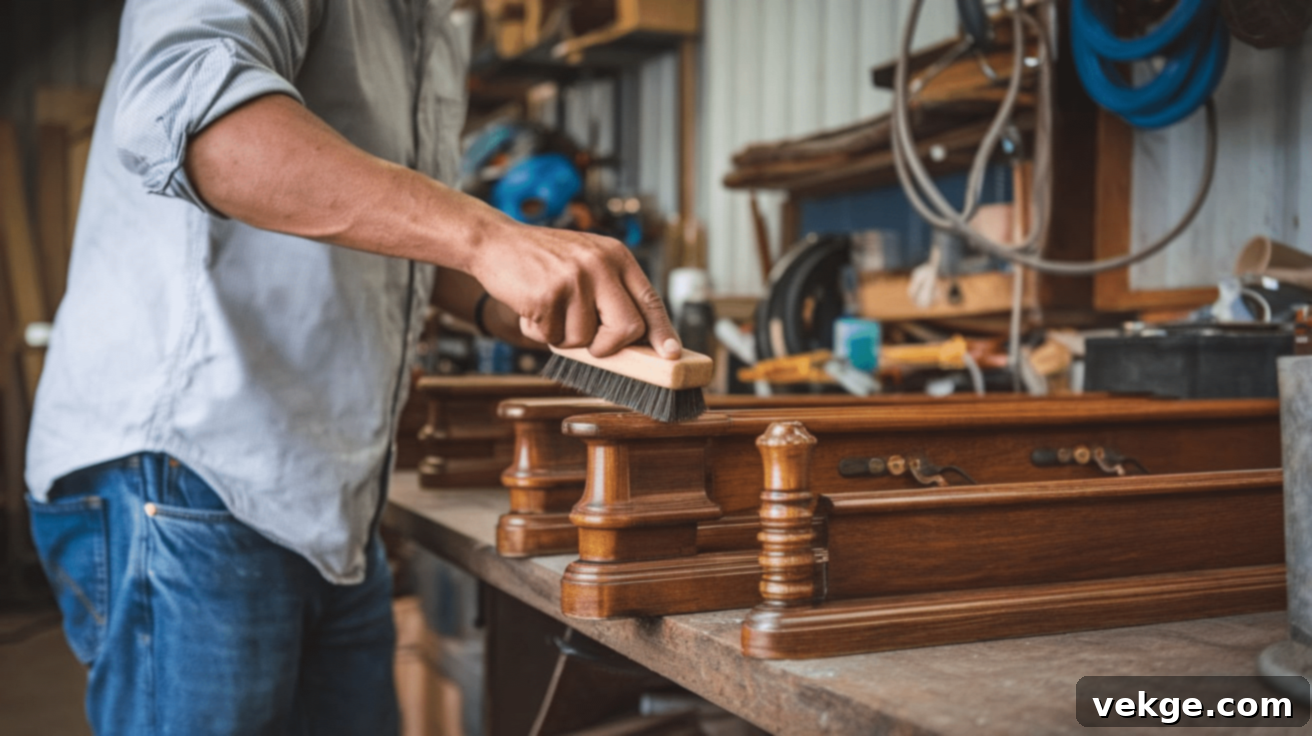
- Cleaning Wooden Hardware: Avoid soaking wooden hardware in water, as excessive moisture can cause swelling, warping, or cracking, and can strip the finish. Instead, use a barely damp cloth with a small amount of mild soap to gently wipe down the surface. Immediately dry with a soft, clean cloth. For deeper cleaning or to restore shine, consider using a wood-specific cleaner or furniture polish, which can also condition the wood.
- Maintaining Wooden Finishes: After cleaning, you can apply a small amount of wood wax or furniture oil to protect and nourish the wood, enhancing its natural luster and creating a barrier against moisture and grime. Always ensure the product is suitable for the specific wood finish (e.g., unfinished, lacquered, painted).
3. Glass and Ceramic Hardware
Glass and ceramic knobs and pulls are relatively easy to clean but demand careful handling to prevent chipping or breakage.
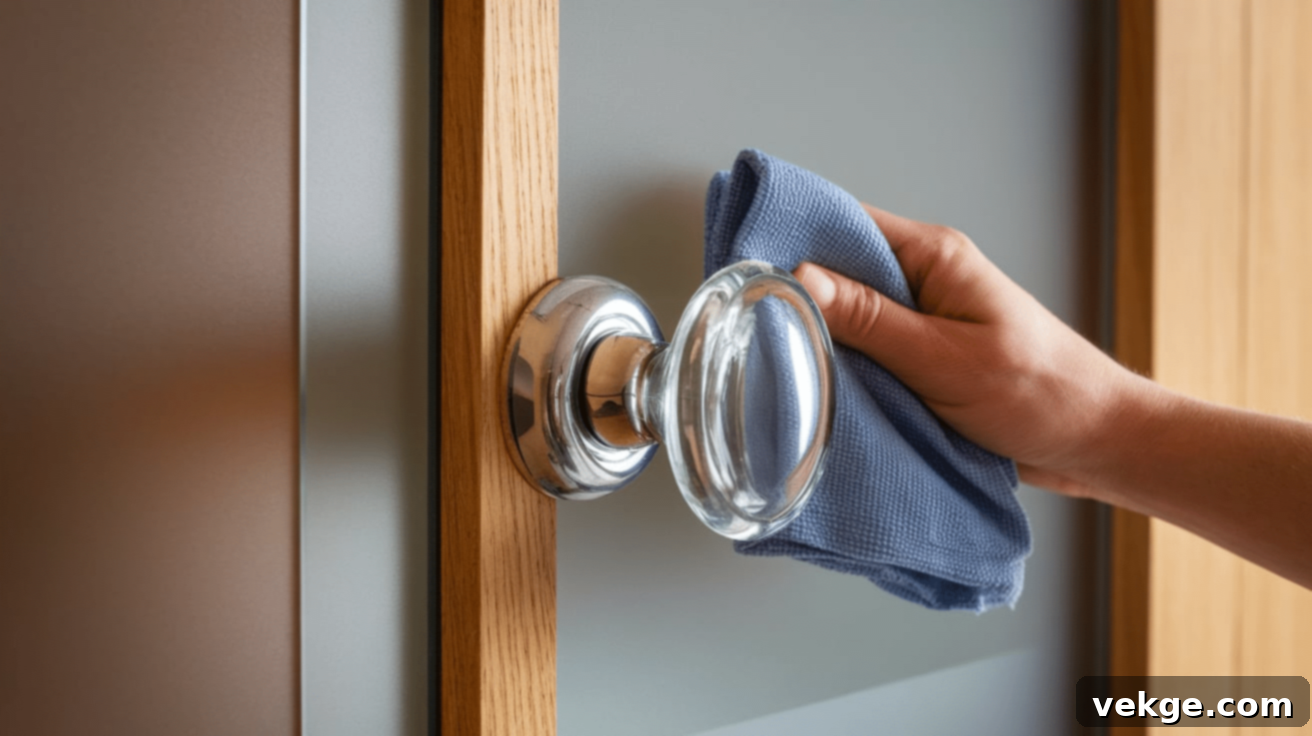
Clean these materials with a damp microfiber cloth moistened with mild soap and water. For stubborn fingerprints, smudges, or to achieve a streak-free shine on glass, a dedicated glass cleaner works wonderfully. Apply the cleaner to a cloth first, rather than directly onto the hardware, to prevent overspray. Buff with a clean, dry microfiber cloth or even a crumpled piece of newspaper for an extra-bright finish. Be mindful of their delicate nature and avoid harsh scrubbing or dropping them.
Tips for Maintaining Clean Hardware Long-Term
Once your hardware is sparkling clean, a little ongoing care will keep it looking fresh and extend the time between deep cleaning sessions. Prevention is key!
- Establish a Regular Cleaning Schedule: Make it a habit to wipe down high-touch hardware surfaces weekly or bi-weekly with a damp cloth. A more thorough cleaning every 2-3 months or as needed will prevent significant dirt and grime buildup, keeping your hardware consistently shiny.
- Apply Protective Coatings: For metals prone to tarnishing like brass and copper, consider applying a thin layer of wax, clear lacquer, or a specialized anti-tarnish spray after cleaning. This creates a barrier that slows down oxidation, saving you considerable time and effort on future cleanings. For wooden hardware, a periodic application of wood oil or wax can protect and condition.
- Avoid Harsh Chemicals and Abrasives: Steer clear of bleach, ammonia-based cleaners, abrasive powders, or scrubbing pads. These can etch, discolor, strip finishes, or scratch the delicate surfaces of your hardware, causing irreversible damage. Always opt for the mildest effective cleaner.
- Wipe Off Spills Promptly: Any spills, whether it’s food, liquid, or household products, should be cleaned off your hardware immediately. Acidic or colored spills can quickly etch, stain, or discolor surfaces if left to dry.
- Manage Environmental Factors: In humid environments, metals can tarnish more quickly. Ensure good ventilation in bathrooms and kitchens to minimize moisture buildup, which can impact hardware longevity.
Conclusion
In conclusion, taking the time to clean your home’s hardware is a small effort that yields significant rewards. It’s an easy and effective way to refresh your home’s appearance, maintain the integrity and functionality of your fixtures, and contribute to a healthier living environment. By following the simple steps of soaking, gentle scrubbing, thorough rinsing, and drying, you can restore the sparkle and smooth operation to any piece of hardware.
Whether you’re dealing with elegant brass, rustic wood, sleek stainless steel, or delicate glass, there’s a specific cleaning method that ensures each material looks its absolute best. Regular cleaning not only preserves these valuable components but also prevents unsightly buildup and elevates the overall polished look of your furniture, doors, and fixtures. Embrace these simple habits, and your hardware will shine like new, enhancing the beauty and functionality of your cherished home for years to come.
Frequently Asked Questions About Cleaning Hardware
How often should I clean my home hardware?
For high-traffic areas and frequently touched hardware, a quick wipe-down weekly is beneficial. For a more thorough cleaning, aim for every 2-3 months or whenever you notice visible dirt, smudges, or tarnishing. Consistency prevents heavy buildup.
Can I clean hardware without removing it from its fixture?
Yes, you can. While removing hardware allows for a more comprehensive clean, you can certainly clean it in place. Use a damp microfiber cloth with a mild cleaner and carefully wipe down the surfaces. Be sure to protect surrounding surfaces with tape if using stronger solutions, and dry thoroughly afterward.
What is the best way to clean tarnished brass hardware?
For unlacquered brass, a mixture of equal parts white vinegar and water, or a specialized brass cleaner, is highly effective. Apply with a soft cloth and buff. If the brass is lacquered (has a clear protective coating), only use mild soap and water to avoid damaging the lacquer.
Is baking soda safe for cleaning most types of hardware?
Yes, baking soda is generally safe and very effective for cleaning most types of hardware. Its fine abrasive quality helps remove stubborn stains and grime without scratching. Always mix it into a paste with water and test on an inconspicuous spot first, especially on very delicate or antique pieces.
How can I effectively clean grease off kitchen cabinet knobs or pulls?
The most effective method is to remove the knobs/pulls if possible. Soak them in a bowl of warm water mixed with a few drops of mild dish soap for 10-15 minutes. The soap will help break down the grease. Then, use a soft-bristled toothbrush to scrub away any remaining residue. Rinse thoroughly and dry completely.
What should I use to clean wooden hardware without causing damage?
For wooden hardware, avoid soaking it in water. Use a barely damp cloth with a very small amount of mild dish soap. Wipe gently, then immediately dry with a clean, soft cloth. You can follow up with a wood-specific furniture polish or wax to nourish and protect the wood.
How can I prevent metal hardware from tarnishing quickly?
After cleaning, ensure metal hardware is completely dry. For unlacquered metals like brass or copper, apply a protective coating such as a specific metal wax, clear lacquer, or even a thin layer of mineral oil (for some items like cabinet hardware) to create a barrier against oxygen and moisture, which cause tarnish.
